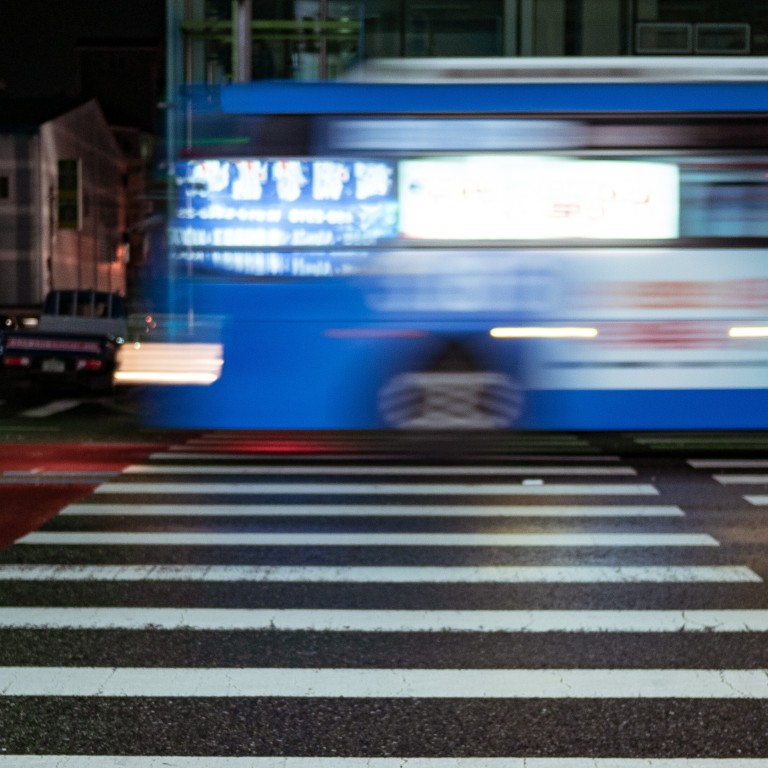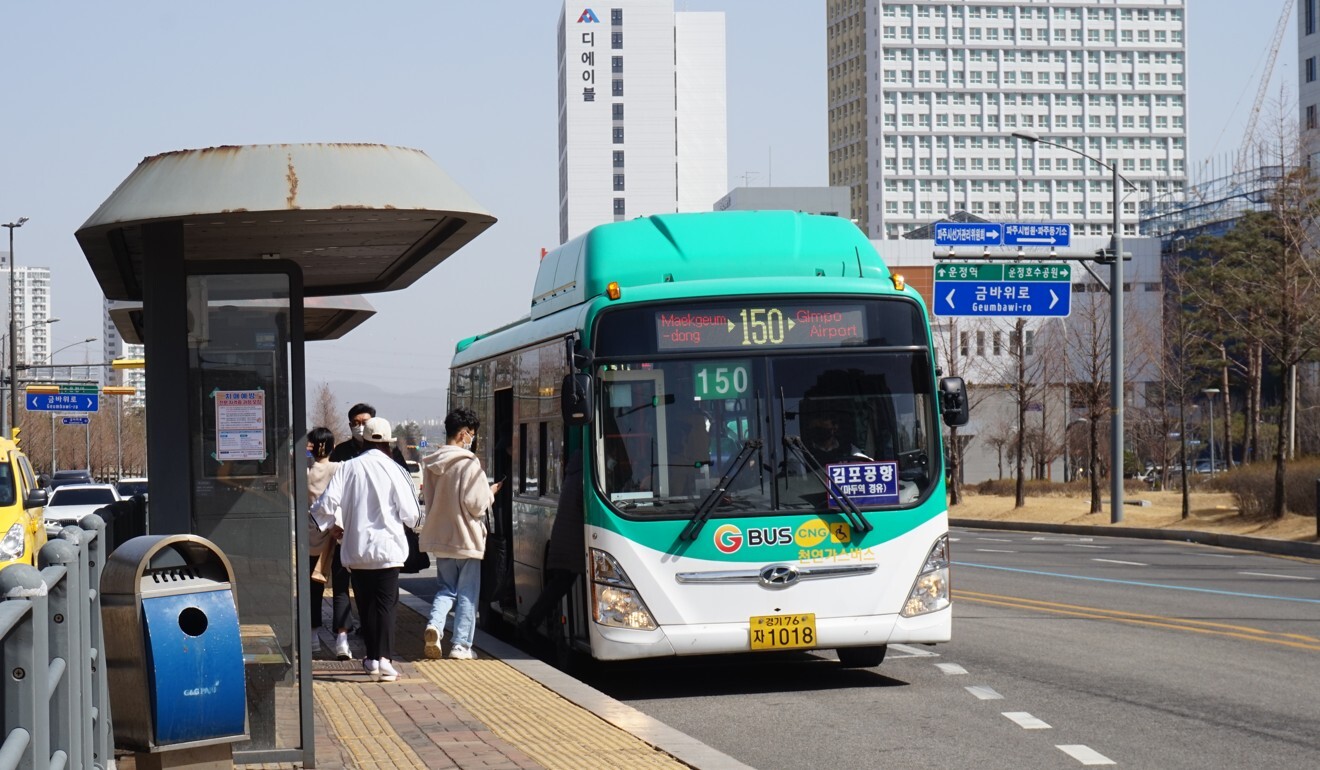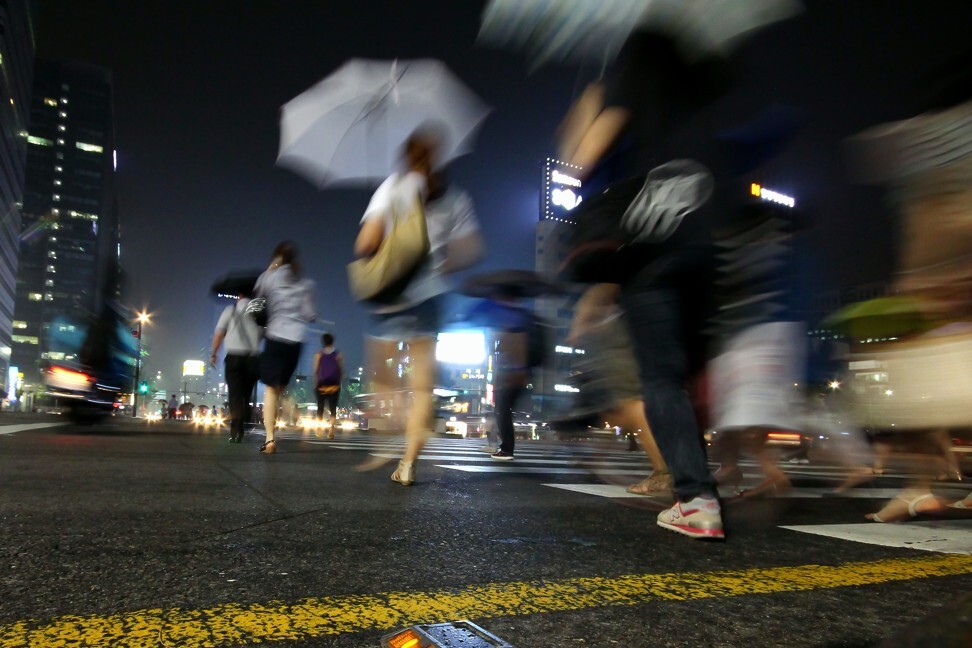
‘Hurry, hurry’ culture helped build South Korea. But it’s deadly for bus commuters
- The death of a 21-year-old after her arm was stuck between the doors of a bus has led to national scrutiny over drivers speeding and braking without considering passengers’ safety
- Reforms have made some difference, but an expert says the ‘hurry, hurry’ mindset remains ingrained – with rushing commuters also likely to injure themselves, too
In January, 21-year-old Kim Jung-eun was killed when her arm was stuck between the doors of a bus, which dragged her for more than 10 metres before she fell and was crushed by its back tyre. The 62-year-old driver was charged with professional negligence resulting in death or accidental homicide.
“If the driver made sure the passenger got off or merely waited for three seconds for the passenger to get off the bus, there wouldn’t have been such an unnecessary and futile death,” Kim’s older sibling wrote in a national petition asking for bus safety protocols to be strengthened, and harsher punishments for bus accidents. The petition garnered more than 35,500 signatures.

Translated in Korean as ppalli, ppalli, South Korea’s “hurry, hurry” mindset came about when the country was rushing to catch up with developed Western nations. The economic revitalisation programmes of the 1960s, its pioneering Covid-19 drive-through clinics and its world-class internet speeds that are accessible from virtually anywhere inside South Korea are some of its results.
But it is also why South Korean netizens claim Kim’s death was an accident waiting to happen. Even though passengers are advised only to stand up after the bus has come to a complete stop, many passengers make their way to the doors while it is still moving as bus drivers seldom wait for long. On top of this, as Han Sang-jin, a senior researcher at the Korea Transport Institute, said most bus drivers speed up right after passengers get on.
A similar incident happened in 2017 when a woman’s coat was caught between the doors of a bus as she was exiting. She was dragged behind the bus as it started to speed up, but was able to escape with several non-life threatening injuries including nerve damage on her fingers. The bus driver paid a penalty for reckless driving, and it was only after the woman’s family filed a complaint that the bus company officially admitted that it was the driver’s fault.
While accidents and injuries on intracity buses due to the fault of bus drivers have decreased between 2003 and 2019, the Korea Consumer Agency found – based on data collected between 2006 and 2009 – that just over half of accidents happened due to sudden braking, 13 per cent due to the premature closing of bus doors and 9 per cent due to buses speeding up with the doors open.
According to data from the Korean National Police Agency reported by the Dong-a newspaper last year, 60 per cent of bus accidents in 2019 happened due to the “failure of bus drivers to drive safely”, while almost 10 per cent of accidents were due to drivers’ failure to keep a safe distance.
On the other hand, accidents also occur due to people hurrying during their use of public transport. In Seoul, between 2010 and 2014, there were more than 1,000 door-related accidents in the Seoul Metropolitan Subway system, due to commuters sticking their hand or other body parts into the doors as they were closing. There were also 553 accidents on escalators inside subway stations from people running, and an additional 339 from people falling on stairs as they were rushing.
It’s the same situation when it comes to lifts – according to the Korea Elevator Safety Agency, between 1993 and 2015, 64 per cent of lift accidents were the result of users getting a part of their body stuck while trying to board the lift as the doors were closing.
When it comes to buses, industry veterans say drivers have for too long have faced more pressure to be punctual than safe. Kim Ki-chung, 92, who owned a small bus company back in the 1970s, said the tactics used included squeezing in as many passengers as possible, reckless driving, refusing elderly or disabled passengers, and ignoring stop requests.
Han of the Korea Transport Institute said there were now new government regulations to keep records of the frequency of drivers’ speeding and sudden braking incidents. Since 2018, businesses with more than 300 employees have been ordered to cap the work week to 52 hours.
“There are still bus drivers who practice reckless driving these days, but it’s not at a level where we should be so worried,” said Han.
“Many bus drivers used to work two consecutive days before taking a rest day, but, now, bus drivers work eight to nine hours a day by either taking the day shift or the night shift,” he said. “Accordingly, aggressive driving habits of drivers seems to have decreased a bit compared to the old days.”
However, the average age of bus drivers in the country is above 50, and Han said many were resistant to change.
“Many of these bus drivers don’t like the fact that people are trying to change the way they have been doing their jobs all these years. They don’t think that there has been that big of a problem with their driving ways,” he said.
“Safety protocols on buses need to be reinforced, but this pressure can’t be solely directed at bus drivers. We should ask if there are enough provisions in place to ensure that bus drivers work in an environment that emphasises safe driving.”



